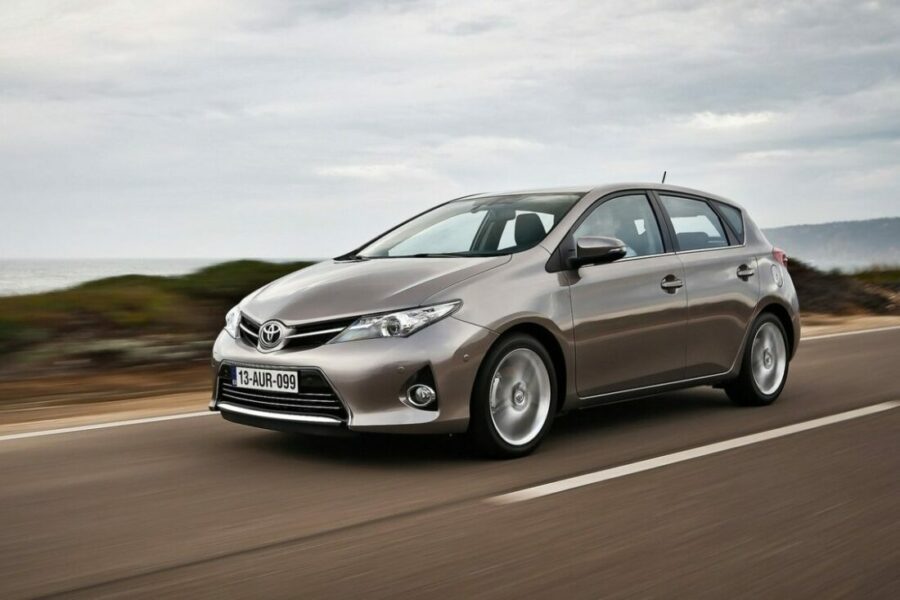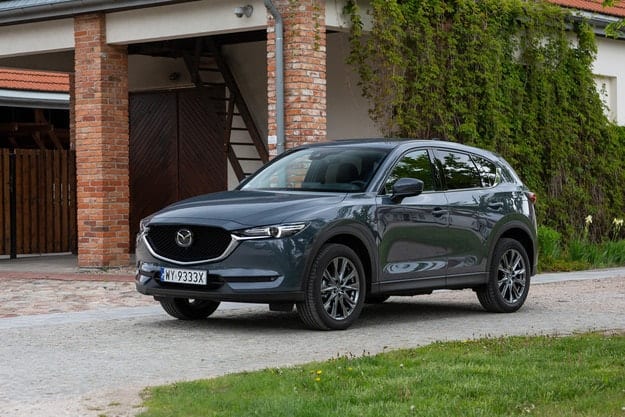
Short test: Toyota Auris 1.6 Valvematic Sol
Without a hint of a bad conscience, we can confirm what we only suspected of a technically completely different hybrid version: the Auris has truly grown into an equal competitor in the lower middle class. It could even be said that the driving experience is very similar to golf, and that we don't want to anger or offend the followers of the Japanese or German brand. Try both options and you will see for yourself what we are writing about.
And how does it feel? The Auris is certainly well made according to Toyota (reviews aside, at least Toyota makes mistakes, but some people cover them up), so you have the feeling that it will last you a long time. The door no longer closes with that “flat” sound that makes your skin tingle, the transmission shifts from gear to gear quietly and smoothly, and the cabin soundproofing, together with the elegantly aspirated four-cylinder engine, is even misleading - in a positive way, of course.
At the beginning of our conversation, while waiting at the intersection, I even thought that it had a stop and start system until I pressed the gas pedal to check if the engine was alive. And look, damn it, it did work, but in such silence and without vibration that I would immediately attribute to it a system that automatically shuts off the engine during short stops. But it didn't have that, and we can only congratulate Toyota on its smooth ride. Although ... To make the naturally aspirated 1,6-liter 97 kilowatt engine accelerate as easily as possible, which requires ideal engine rpm, a six-speed manual transmission with short ratios was attached to it.
But instead of sixth gear being really "economically long", the engine spins at 130 km / h at 3.200 rpm. And it is this information that is also to blame for the fact that we have produced, on average, a few deciliters more consumption on the motorway than we would have expected from a cocktail. Despite the solid power data, the engine is not exactly a jumper, but it is enough for everyday family work.
“Our” test car also had, like the hybrid version, a multi-link rear axle, so we can only assume that it responds better to various surfaces than the base petrol version with a 1,33-liter engine and 1.4 turbo diesel. To get a feel for how good an inferior technical solution is, we'll obviously have to wait a bit to get the cheapest Auris from a local Toyota dealer.
It has a pretty good price regardless of equipment, but it's unfortunate that the new Golf is also relatively affordable. It's a pain in the ass for many competitors in this class of car. Despite the full load, the chassis does not sit down, and the steering wheel, regardless of the fullness of the trunk, willingly fulfills the driver's commands. When reversing, the poor rear visibility is a bit confusing, as the small window on the tailgate (along with the humble rear wiper) isn't quite right. That's why the help of a rear-view camera comes in handy, and for those who are more uncomfortable, semi-automatic parking, where the driver controls only the pedals, and the steering wheel is controlled electronically.
The test Auris didn't have navigation, so it had a touchscreen, smart key, 17-inch alloy wheels, cruise control and even a Skyview panoramic skylight for which you have to pay an extra € 700. The driving position is also good thanks to the vertically positioned dashboard, the gauges are transparent, and thanks to the new platform, even the passengers in the rear seat will not complain about roominess. Only daylight on foggy mornings requires little maintenance. Although the Auris in the tunnels automatically switches to night lighting quickly enough, you are unlit in the fog behind.
The second weakest petrol version only confirms what has already been seen in the hybrid: the Auris has made significant advances in technology. Or in other words: Toyota is doing everything it can to catch up with the Golf. They're not missing out on a lot!
Text: Aljosha Darkness
Toyota Auris 1.6 Valvematic Left
Basic data
| Sales: | Toyota Adria Ltd. |
|---|---|
| Base model price: | 18.950 € |
| Test model cost: | 20.650 € |
| Calculate the cost of auto insurance | |
| Acceleration (0-100 km / h): | 10,3 with |
| Maximum speed: | 200 km / h |
| Mixed flow ECE: | 8,6l / 100km |
Technical information
| engine: | 4-cylinder - 4-stroke - in-line - petrol - displacement 1.598 cm3 - maximum power 97 kW (132 hp) at 6.400 rpm - maximum torque 160 Nm at 4.400 rpm. |
|---|---|
| Energy transfer: | front wheel drive engine - 6-speed manual transmission - tires 225/45 R 17 W (Bridgestone Potenza). |
| Capacity: | 200 km/h top speed - 0-100 km/h acceleration in 10,0 s - fuel consumption (ECE) 7,9/4,8/5,9 l/100 km, CO2 emissions 138 g/km. |
| Mass: | empty vehicle 1.190 kg - permissible gross weight 1.750 kg. |
| External dimensions: | length 4.275 mm – width 1.760 mm – height 1.450 mm – wheelbase 2.600 mm – trunk 360–1.335 55 l – fuel tank XNUMX l. |
Our measurements
| T = 18 ° C / p = 1.150 mbar / rel. vl. = 37% / odometer status: 3.117 km | |
| Acceleration 0-100km: | 10,3s |
|---|---|
| 402m from the city: | 17,4 years ( 127 km / h) |
| Flexibility 50-90km / h: | 9,9 / 13,1s (IV/V) |
| Flexibility 80-120km / h: | 13,1 / 18,5s (Sun./Fri.) |
| Maximum speed: | 200km / h (WE.) |
| test consumption: | 8,6 l / 100km |
| Braking distance at 100 km / h: | 40,5m |
| AM table: | 40m |
evaluation
While we were in awe of the Auris hybrid, we finally realized that the vehicle is mostly good with this version, despite minor flaws!
We praise and reproach
smoothness of the engine
six-speed manual transmission
driving position
cabin soundproofing
Rear View Camera
semi-automatic parking
highway consumption (higher revs)
poor rear visibility (small window, small wiper)
daylight fog light
